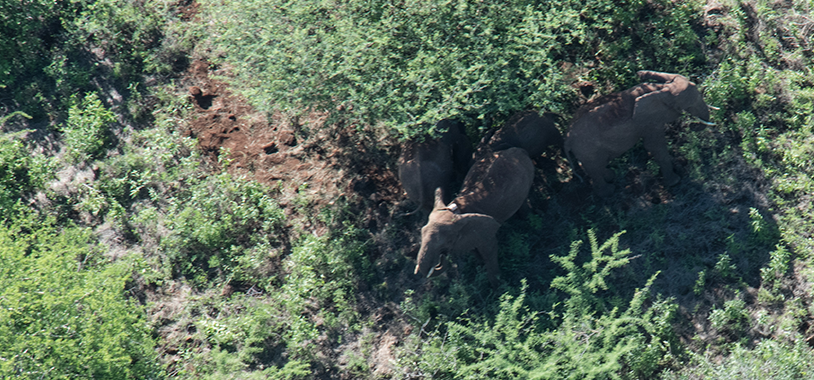A female elephant fitted with a GPS tracking collar has made a remarkable journey from Samburu to Marsabit in Northern Kenya – suggesting that elephants are starting to feel safe again.
Koya, aged 23, made the 48 mile trek with six of her family, traversing a danger zone once troubled by tribal conflict and ivory poaching. This is the first time a female elephant has ever been recorded making the journey. In 2008 a collared bull elephant named Shadrack made the journey in the opposite direction. Female elephants travel with their young and are therefore more risk-adverse, making Koya’s decision significant.
Demand for ivory has devastated most of Africa’s elephant populations, fragmenting them into smaller and smaller subpopulations that are divided by areas where they no longer dare to roam. In northern Kenya, years of regional conflict added to the poaching risk, and made the remote and arid plains separating Samburu and Marsabit even more dangerous for elephants.
Today however, efforts by indigenous communities to end the ivory crisis and build peace in Northern Kenya through their community conservancies appear to be paying off, supported by organisations like the Northern Rangelands Trust (NRT) and Save the Elephants in partnership with government. Koya’s journey shows us that elephants are once again willing to journey from the Samburu plains to the foothills of Mt. Marsabit.
For the past 15 years, NRT member community conservancies have been working to strengthen governance, peace initiatives, and sustainable natural resources management. Improving security for wildlife and people, alongside the Kenya Wildlife Service, Save the Elephants and the relevant authorities, has led to a drop in the number of elephants killed for ivory in NRT member conservancies since 2012. In 2019, 50% of all livestock reported stolen (a primary driver of conflict) were recovered and returned to their owners through conservancy collaborations, helping to mitigate a high number of retaliation attacks. There are now 76 peace ambassadors drawn from representative ethnic groups active across the landscape.
Save the Elephants has partnered with NRT since its inception, working to understand the ecosystem from an elephant’s perspective. Tracking wild elephants like Koya and Shadrack and studying their movements is crucial to understanding elephant behaviour. The real-time information from the collars has proven to be a powerful tool for protecting herds from poachers, while over the long term the data gives elephants a voice when landscape planning decisions are made.
Since she was collared in 2019, Koya and her herd have moved through Melako, Sera and Biliqo Bulesa community conservancies in Samburu, Isiolo and southern Marsabit counties. Like all NRT-member conservancies, each employs its own team of scouts, who work around the clock to monitor and protect elephants while supporting local community policing efforts too. There are almost 800 scouts across the landscape, who work alongside mobile rapid response units in partnership with law enforcement agencies. With community conservancies providing secure spaces, elephants are starting to expand their range once again.
This is important. With the Samburu/Laikipia elephant population growing, elephants need more safe spaces to feed, breed and move through in order to reduce pressure on areas in the southern part of the landscape. Here, human densities are high, and while ivory poaching is decreasing, human-elephant conflict is on the rise as competition for pasture and water intensifies.
As Koya shows us, community conservancies on the frontiers of Isiolo, Samburu and Marsabit are providing this vital space, and hold the potential for further expansion of elephant range. Her footprints also demonstrate that with peace, security and good conservation work, elephants once fragmented by the ivory crisis can and are re-connecting again.
Photos by Frank Pope/Save the Elephants



